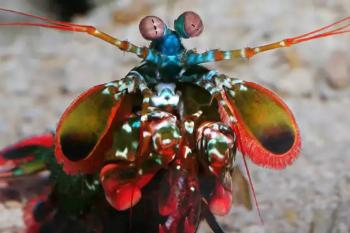Flatworms
There are more than 20,000 species of Platyhelminthes (pronounced “pla-tee-HEL-minthes”). The group includes such animals as the freshwater planarian, colorfully patterned marine flatworms, and parasitic worms that live inside bodies of an estimated 200 million humans around the world.
Flatworms are bilaterally symmetrical with a defined head and tail region and a centralized nervous system containing a brain and nerve cords. Clusters of light-sensitive cells make up eyespots on either side of the head. The head region of the flatworm also contains other paired sense organs, which are connected to the flatworm’s simple brain.
Flatworms are hermaphroditic and capable of sexual and asexual reproduction. Their bodies have only a single opening, which serves as both a mouth and an anus. They are, as their name implies, flat. They have no circulatory system or body cavity (coelom), but they do have an excretory and digestive system. They take in oxygen through their skin. The highly branched gut cavity distributes nutrients to their cells.
Features
- Bilaterally symmetrical with a head and a tail
- Centralized nervous system
- Three tissue layers
- No body cavity, no circulatory system and no hard skeleton
Platyhelminthes Fact:
The longest flatworm ever found, a tapeworm, was more than 90 feet long.
Word Bank
Parasitic: a relationship between species, where one species, the parasite, benefits at the expense of the other, the host
Bilaterally symmetrical: the right half is a mirror image of the left side
Hermaphroditic: simultaneously male and female
Coelom: fluid-filled body cavity
















